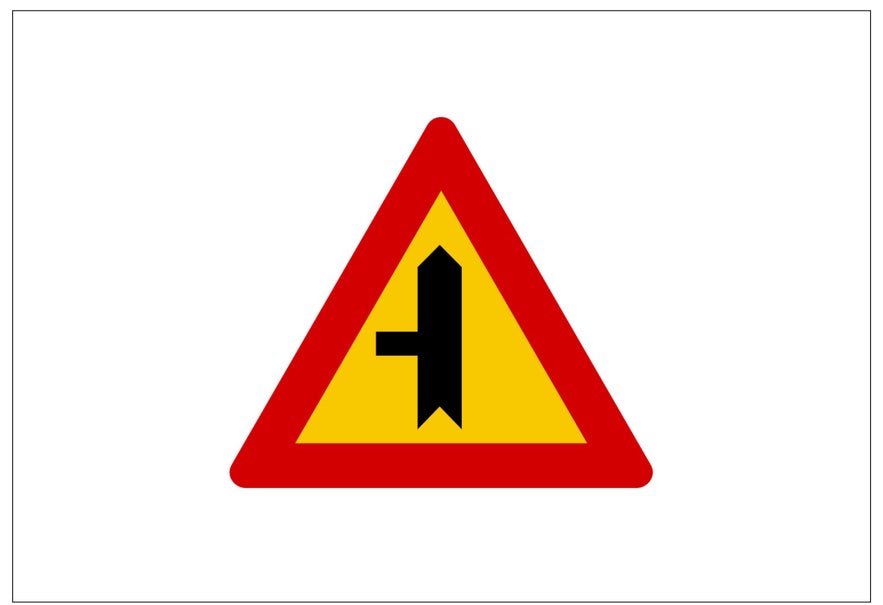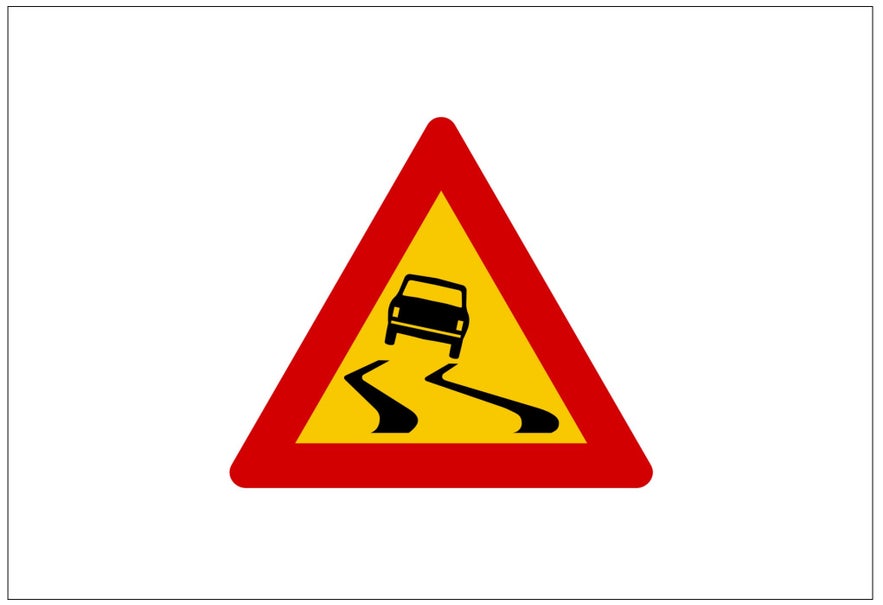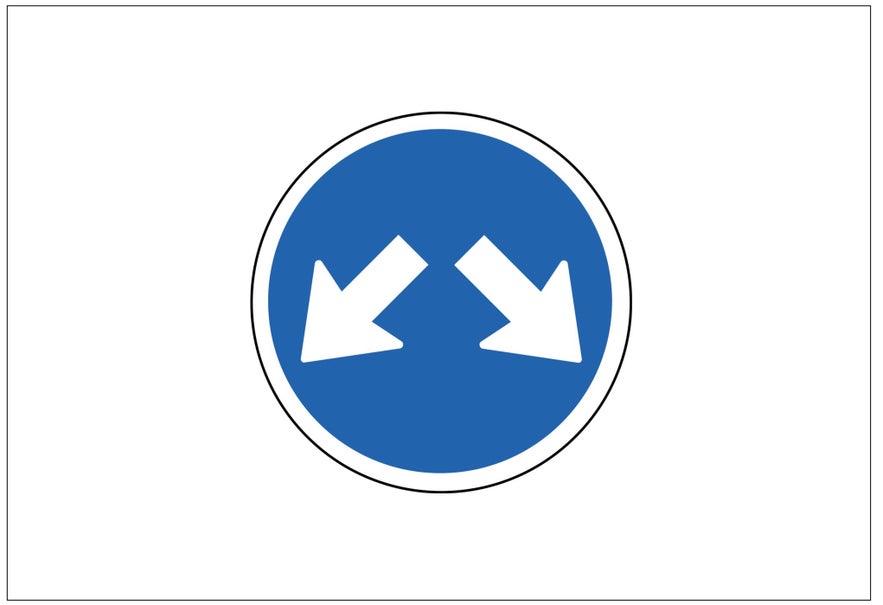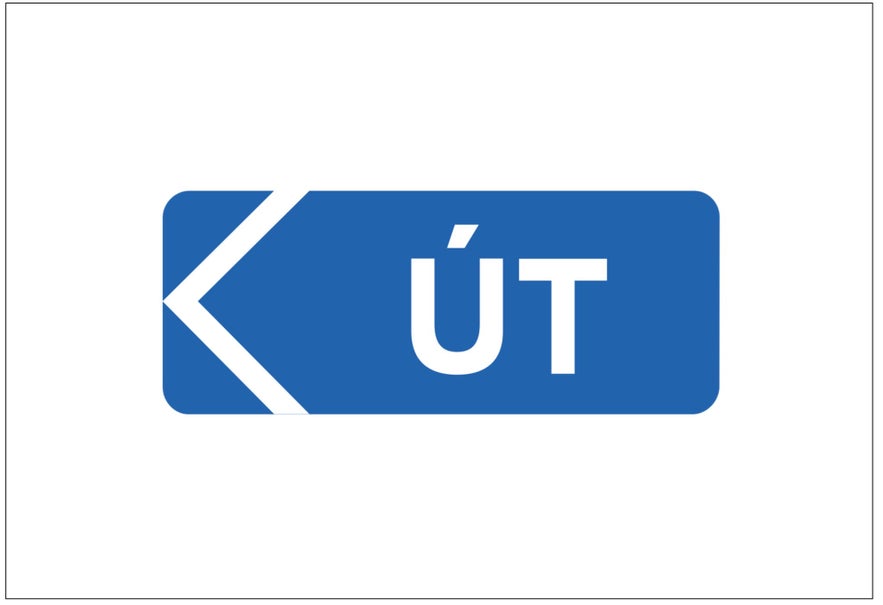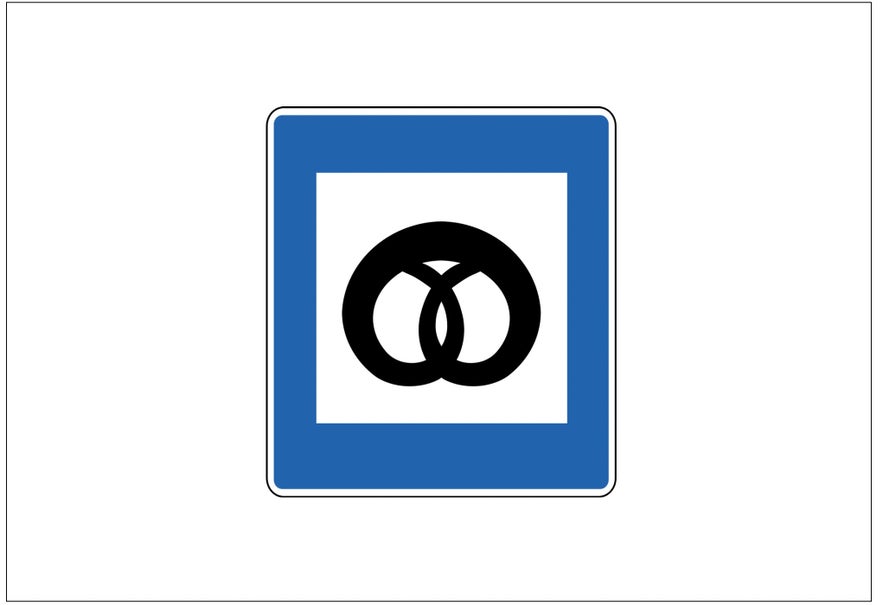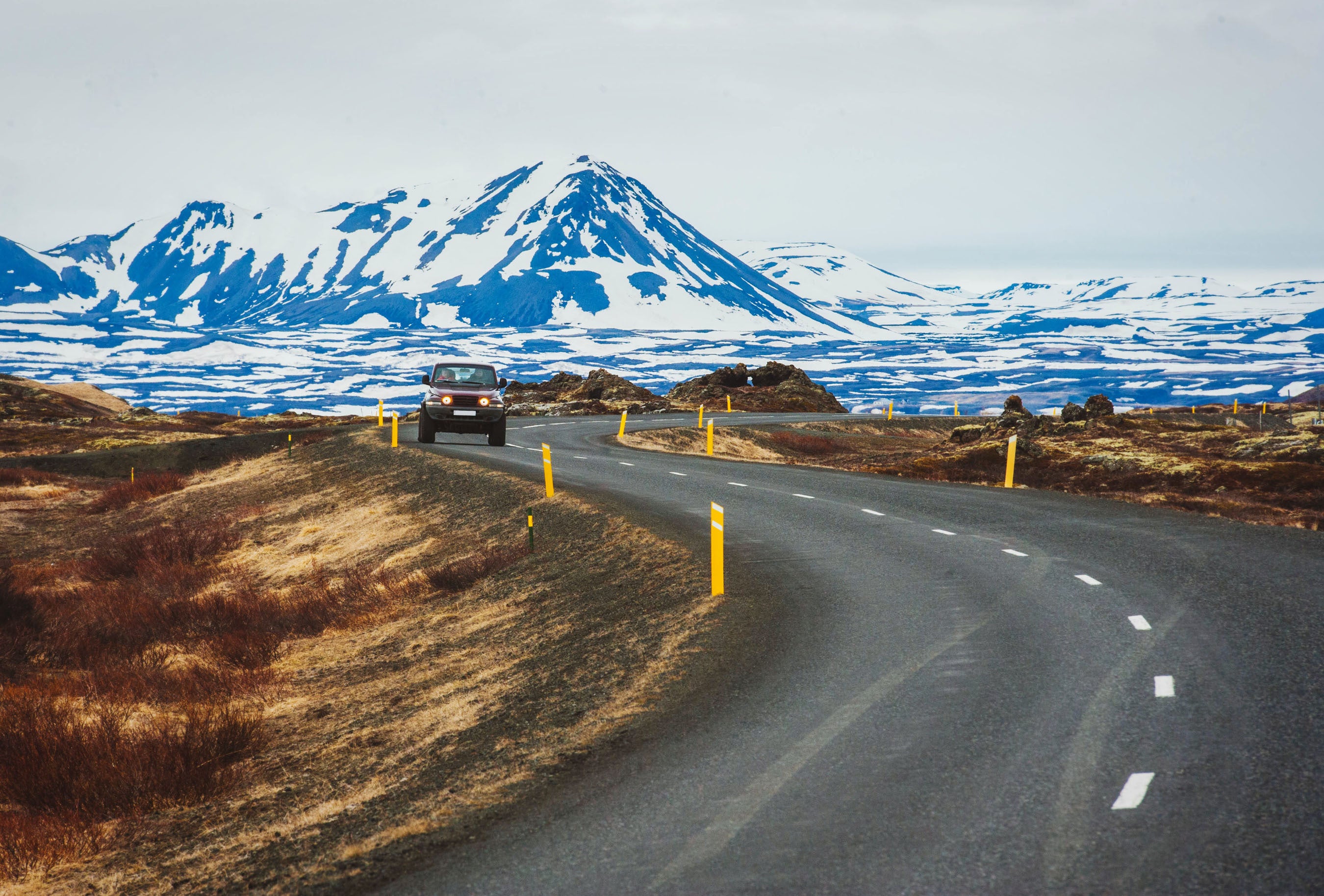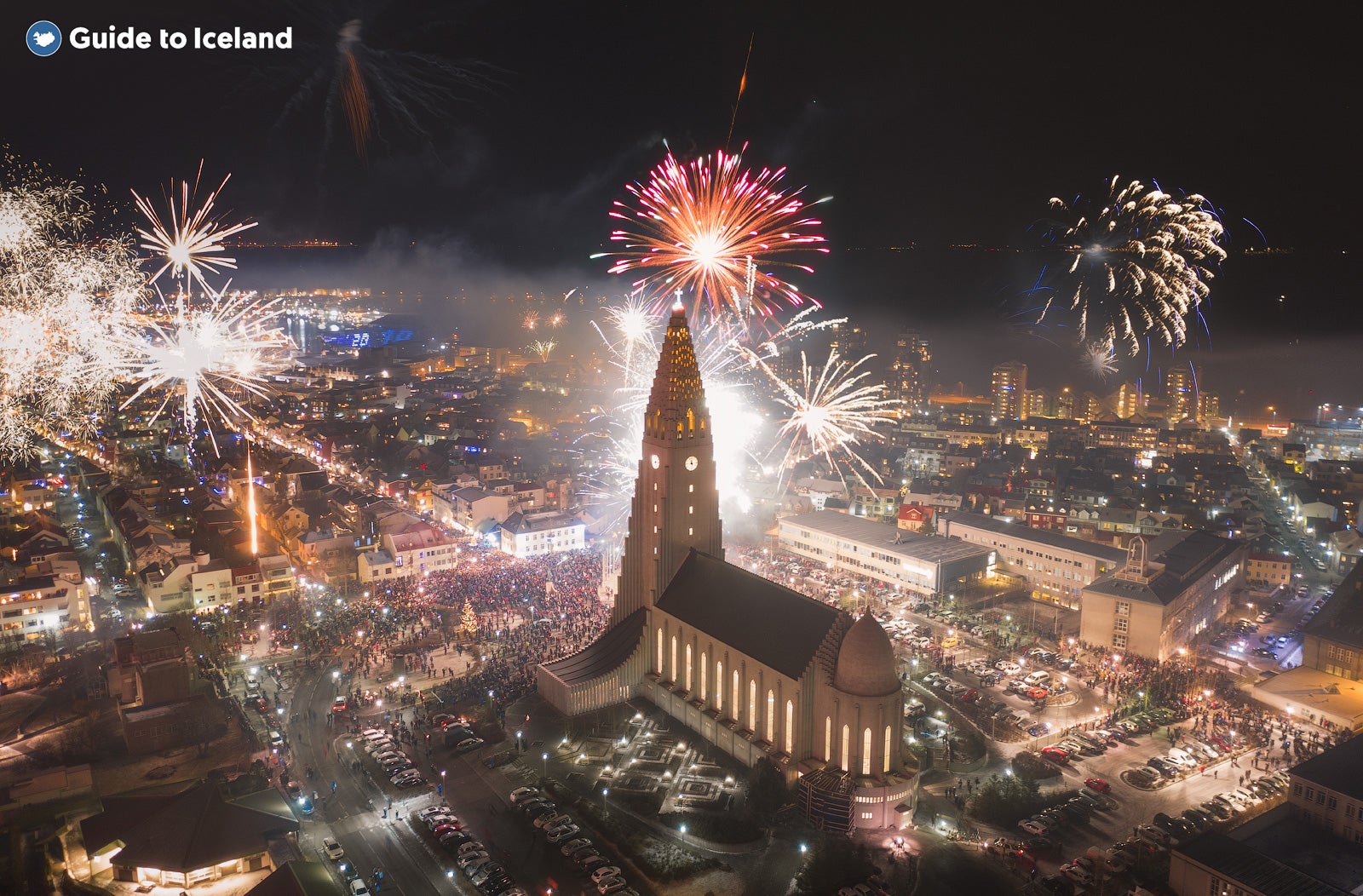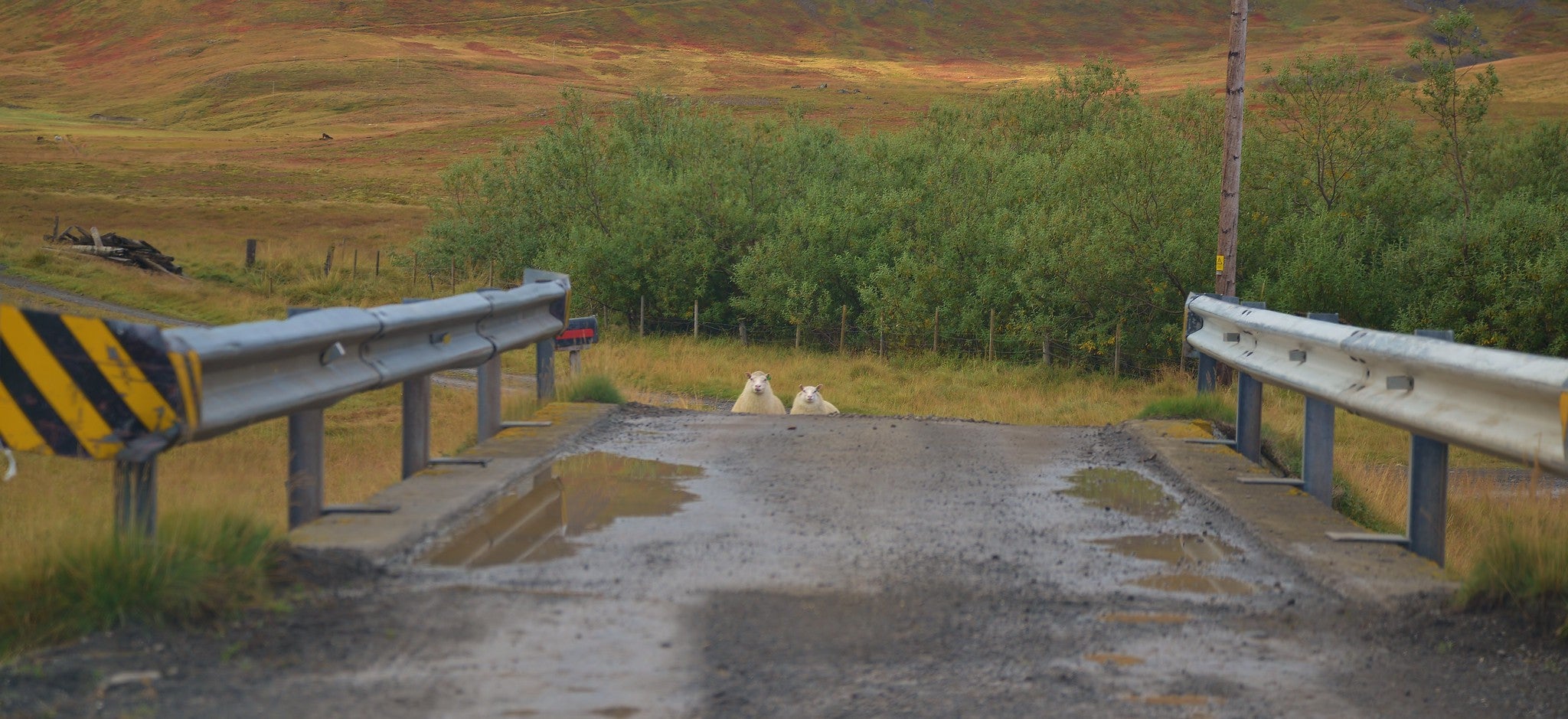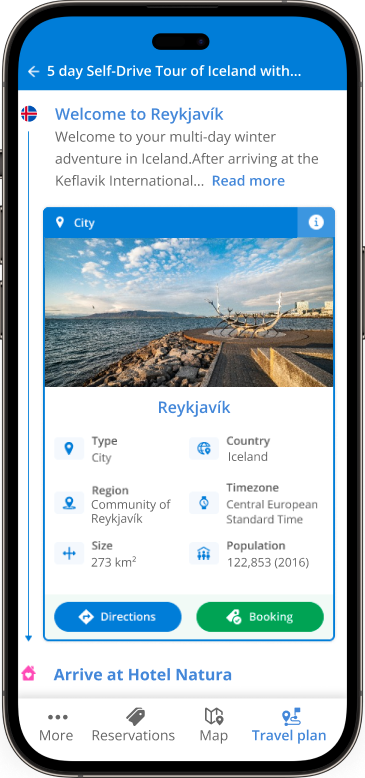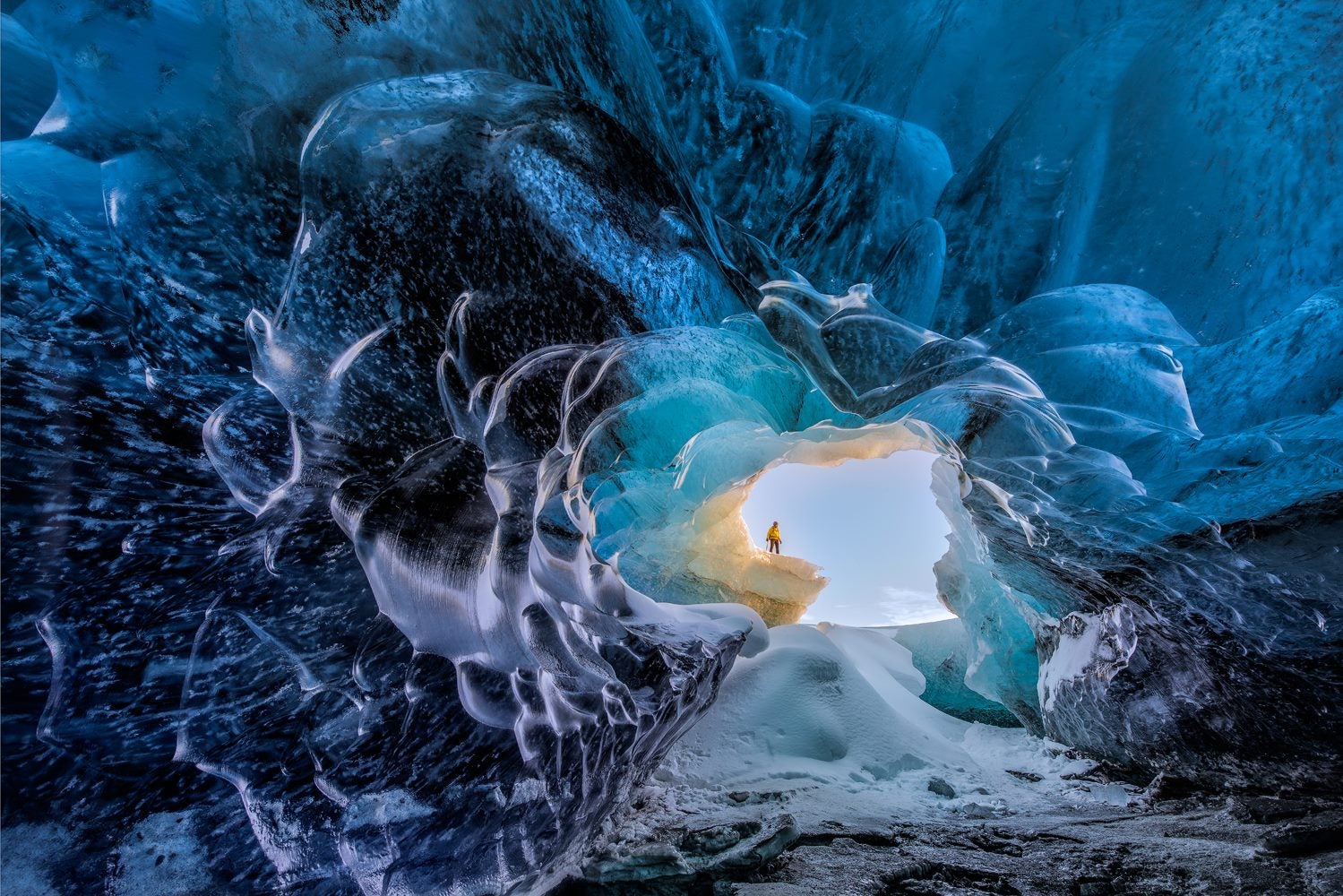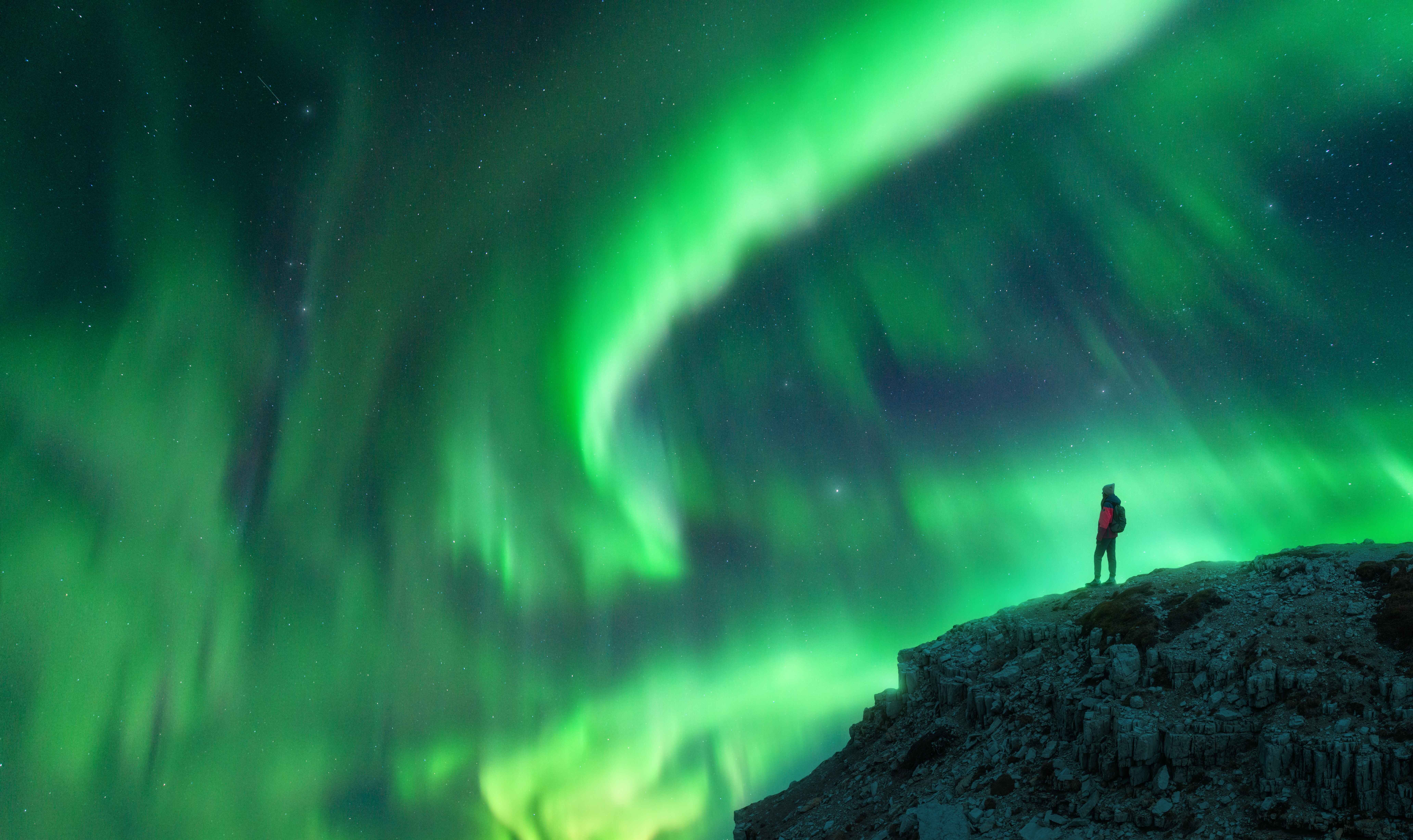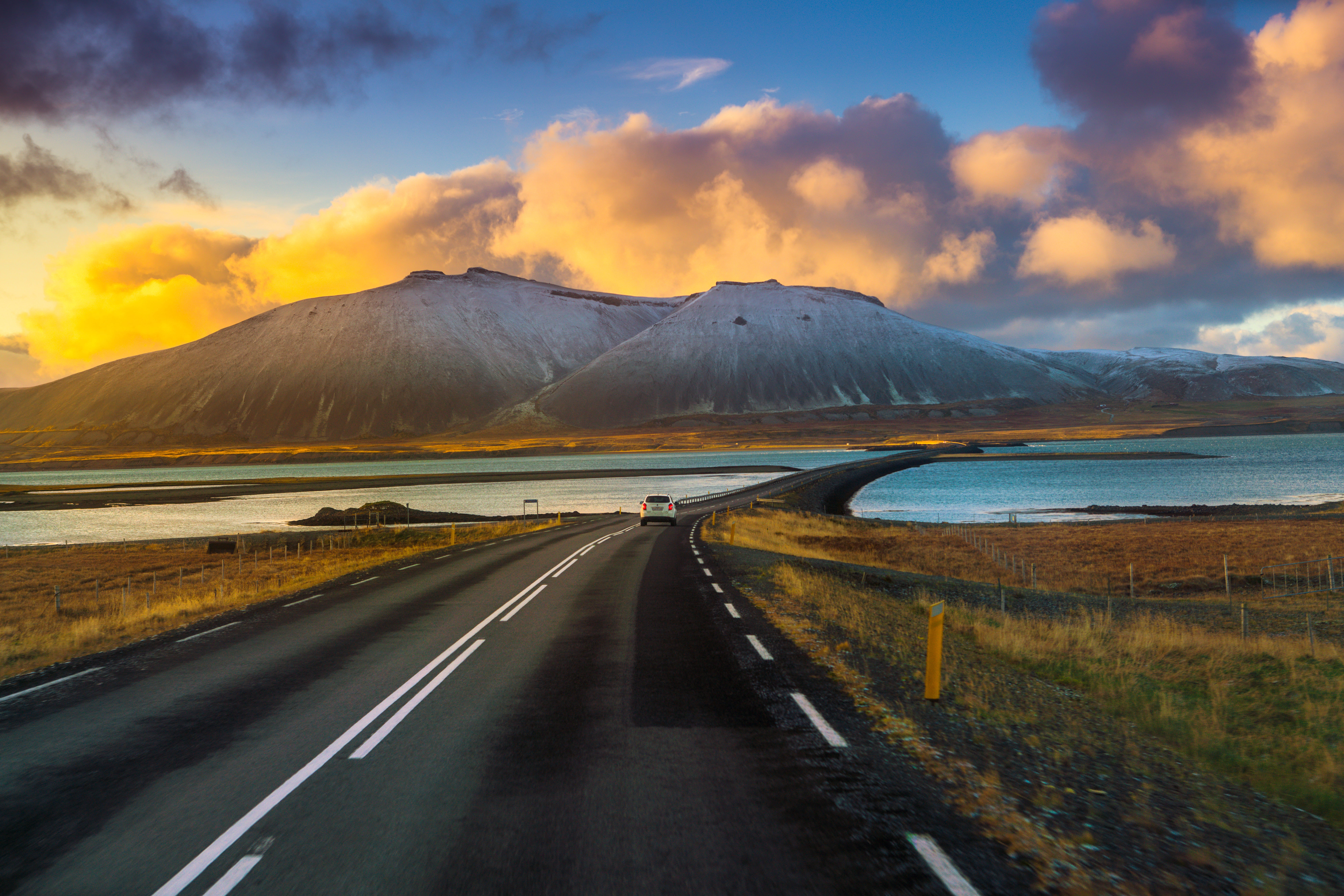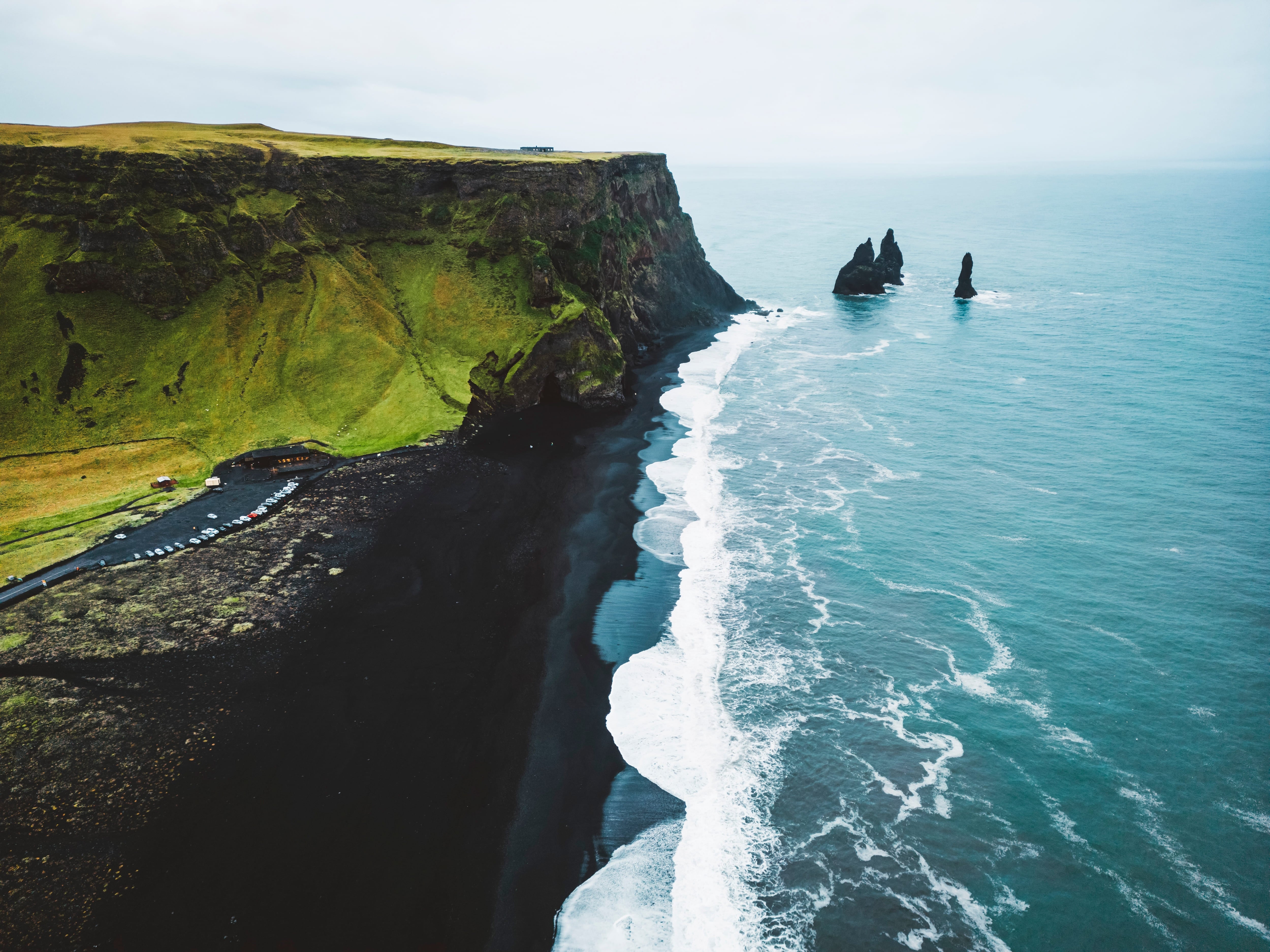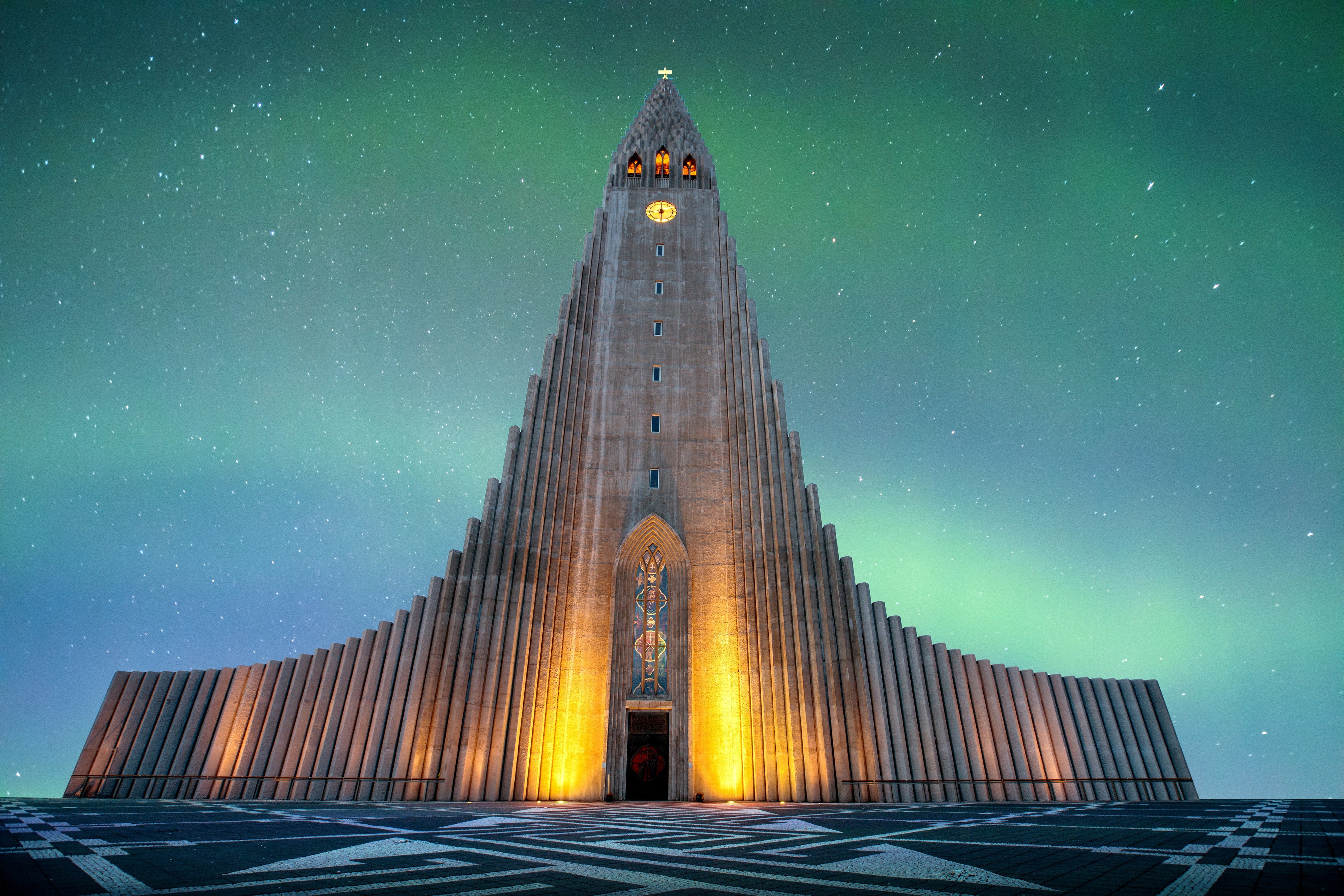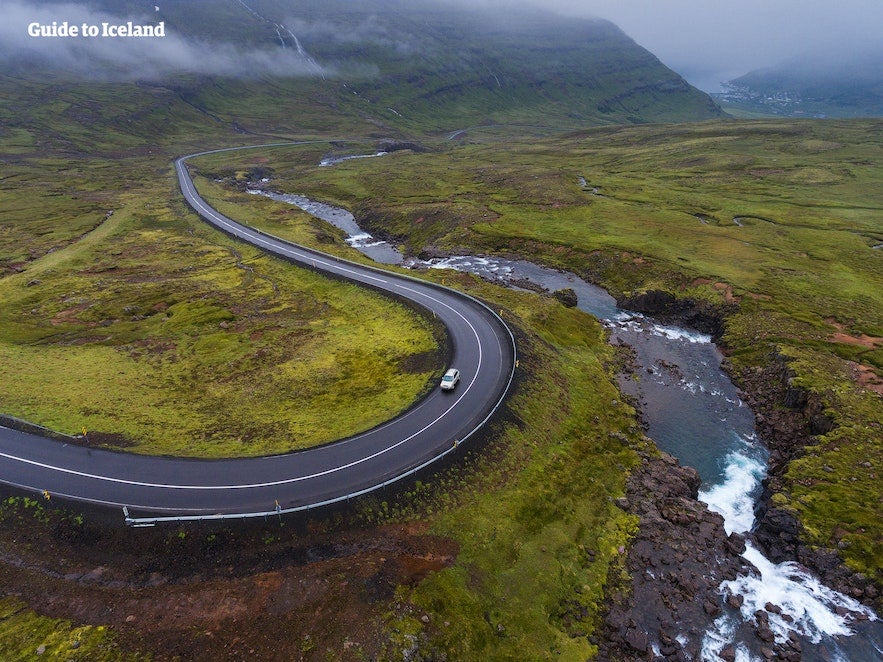
Stay safe on the roads with this guide to Iceland’s road signs! Whether you're driving around the entire Ring Road or just in Reykjavik, understanding road signs is key.
Renting a car and driving in Iceland can be challenging, especially with ever-changing weather and unfamiliar road conditions. That’s why self-drive tour packages are a popular option, as they come with a professionally curated itinerary and support from a travel guide, so you can explore confidently and at your own pace.
Why You Can Trust Our Content
Guide to Iceland is the most trusted travel platform in Iceland, helping millions of visitors each year. All our content is written and reviewed by local experts who are deeply familiar with Iceland. You can count on us for accurate, up-to-date, and trustworthy travel advice.
To prepare for your trip, it's important to understand Icelandic road signs and driving rules. These signs provide essential information on speed limits, road closures, icy conditions, and safety tips.
Whether you're navigating city streets in Reykjavik or heading into remote areas like the Highlands, knowing what the signs mean helps ensure a smooth and safe journey.
Keep reading to learn about Iceland’s road signs and driving in Iceland for a stress-free trip!
Key Takeaways
-
Iceland’s road signs use symbols and colors to ensure easy understanding for all drivers, even if you're unfamiliar with the country.
-
Keep an eye out for signs regulating speed, vehicle entry, and parking. These signs are typically circular, with red borders and black text.
-
Be prepared for changing road conditions with signs warning of curves, ice, animals, or poor road surfaces.
-
In Iceland, you can't turn right on red unless otherwise indicated. Be sure to follow all traffic light rules for safety.
- See also: How To Drive Safely in Iceland
Preparing To Drive in Iceland
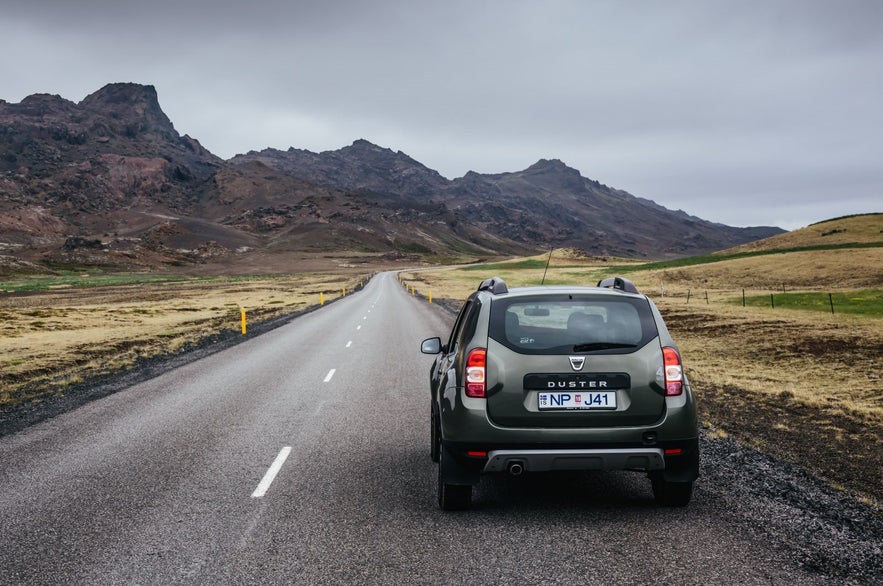
Are you ready to take the next steps toward driving in Iceland? Here are some practical things to know when preparing for your Iceland road trip.
Booking a Rental Car in Iceland
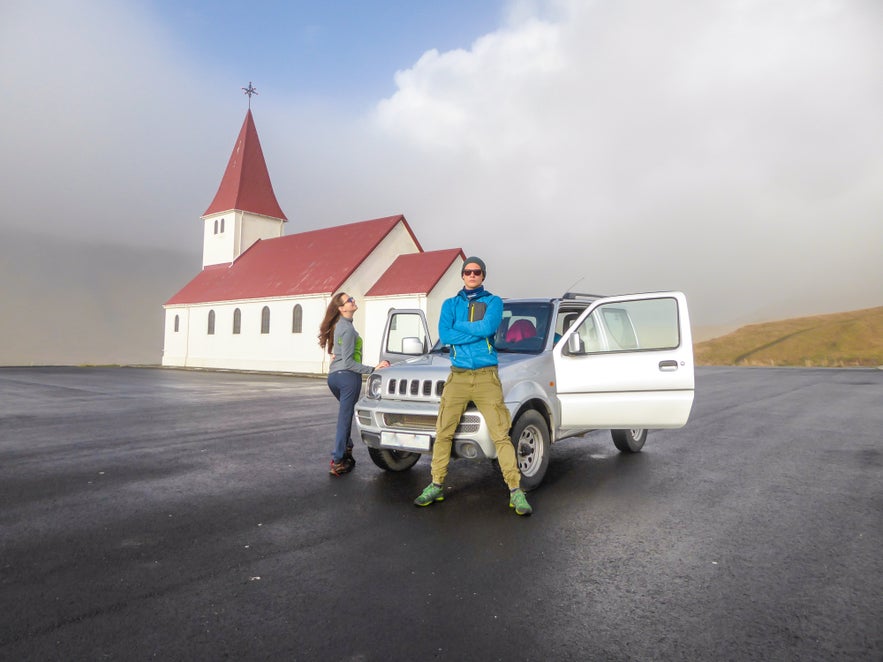 When preparing to drive in Iceland, booking the right rental car is essential for a smooth journey. You can book a rental car from Reykjavik, rent a car in Akureyri, or choose a car rental at Keflavik International Airport before arriving in the country.
When preparing to drive in Iceland, booking the right rental car is essential for a smooth journey. You can book a rental car from Reykjavik, rent a car in Akureyri, or choose a car rental at Keflavik International Airport before arriving in the country.
Here’s a look at the different car rental options available in Iceland:
-
4x4 car rentals: Explore Iceland's off-road beauty with a 4x4 vehicle design for rugged terrain.
-
Budget-friendly car rentals: Ideal for navigating Reykjavik and other urban areas.
-
Campervan rentals: Take a scenic journey with a camper for an unforgettable road trip and longer trips.
-
Luxury vehicle rentals: Experience Iceland in comfort and style with a luxury car.
We highly recommend choosing your rental car early to get the best price, especially if you're planning summer self-drive tours. Prices go up, and options quickly become limited as high season approaches, so don't leave it until the last minute to book!
- Check out the Top 10 Car Rental Companies in Iceland
- See also the Best Advice for Renting a Car in Iceland
Plan Your Road Trip Itinerary
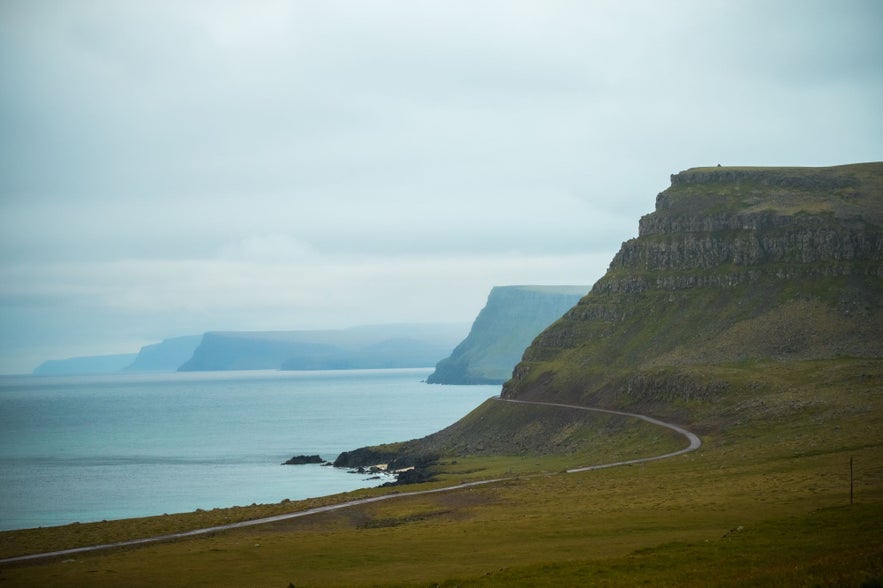
You'll want to keep your Iceland itinerary flexible because of the ever-changing weather conditions and all those spontaneous stops you won't want to miss out on. Thankfully, there are great resources to help map out an epic adventure!
You can check out these top itineraries in Iceland that cover many major sights or explore the vast selection of vacation packages for different itinerary lengths.
Alternatively, self-drive tour packages are a perfect option if you want to maintain flexibility but let someone else handle the details of organizing everything. These tours provide a detailed and customizable itinerary, along with a rental car and accommodations in Iceland, offering the best of both worlds.
For example, this 10-day self-drive tour of the Ring Road covers many of Iceland's top attractions, while those with more time can embark on a 19-day self-drive expedition around the entire country.
- See more about How Many Days To Spend in Iceland
Prepare for the Unexpected

Road trips through Iceland are an adventure, but the island’s unpredictable weather and remote roads mean you must be prepared for anything. Packing a few essentials can make all the difference, as your rental car agency might not provide some items.
Start with a first-aid kit, a blanket, and items like a car charger for your phone or a fully charged power bank. A physical map is also useful, especially in areas with poor mobile coverage. Don't forget snacks and water in case you're delayed.
N1 gas stations are one of the most convenient spots across the country. You can find them all around the country, offering everything from warm meals, snacks, drinks, and light groceries to windshield fluid, motor oil, gas containers, and ice scrapers.
If you're concerned about road conditions, N1 stations often display live feeds from the Road Administration of Iceland, helping you stay informed and safe on your journey.
- Learn more about Gas Stations in Iceland: The Ultimate Guide
How To Read Icelandic Road Signs
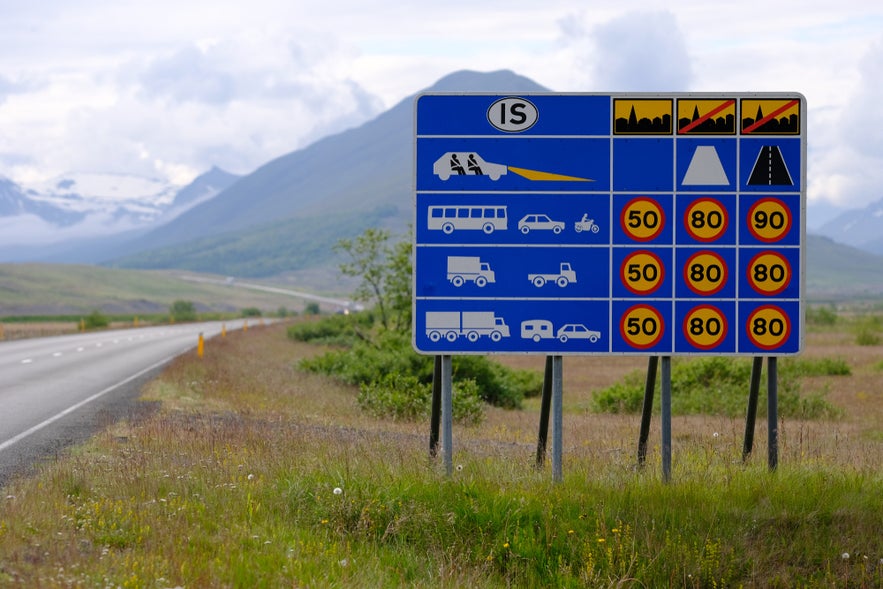 Icelandic road signs are designed to be clear and easy to understand, even if you're driving in a foreign country. Most signs use symbols and pictures to communicate their meaning, making them intuitive for all drivers.
Icelandic road signs are designed to be clear and easy to understand, even if you're driving in a foreign country. Most signs use symbols and pictures to communicate their meaning, making them intuitive for all drivers.
This is particularly true for warning, prohibitory, and mandatory signs, which are standardized for easy recognition.
Many Icelandic road signs resemble those in other countries, like stop signs featuring the word "STOP" in English, which are identical to those you may already be familiar with.
However, some signs include Icelandic words, especially place-names or additional directions. These will often include a helpful image to ensure you understand their meaning.
Since Iceland uses the metric system, signs display speed limits and distances in kilometers. Make sure to keep an eye on the kilometers per hour (kph) signs to avoid any confusion, especially if your car uses miles per hour (mph).
Stay prepared and familiarize yourself with these essential road signs to ensure safe travel across Iceland.
Common and Important Road Signs in Iceland
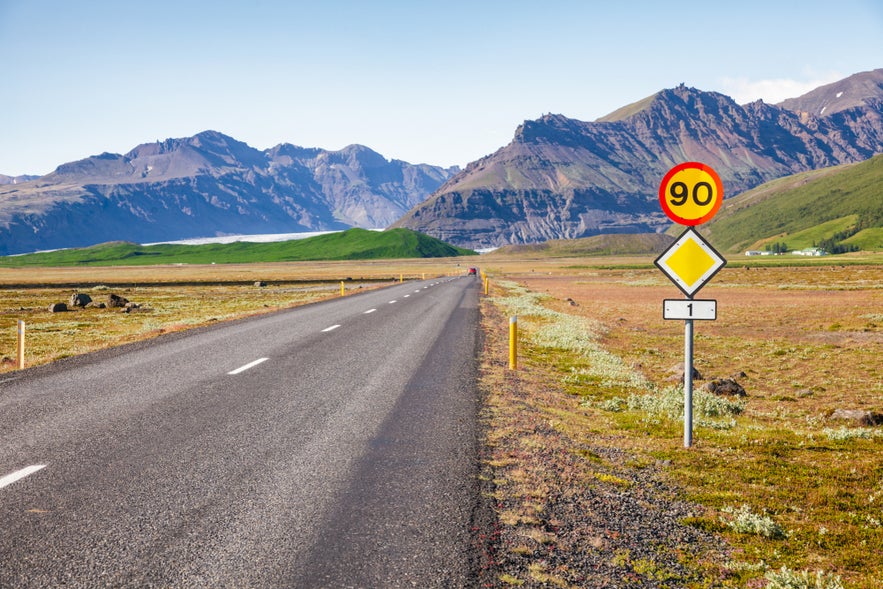 In Iceland, there are various types of common but vitally important road signs. They are usually on roadsides, highways, and near intersections, making them easy to spot.
In Iceland, there are various types of common but vitally important road signs. They are usually on roadsides, highways, and near intersections, making them easy to spot.
The sign's colors and shape indicate its type. Keep reading to learn about Iceland's different types of signs, including traffic, informative, warning, mandatory, and advisory signs.
Prohibitory Road Signs
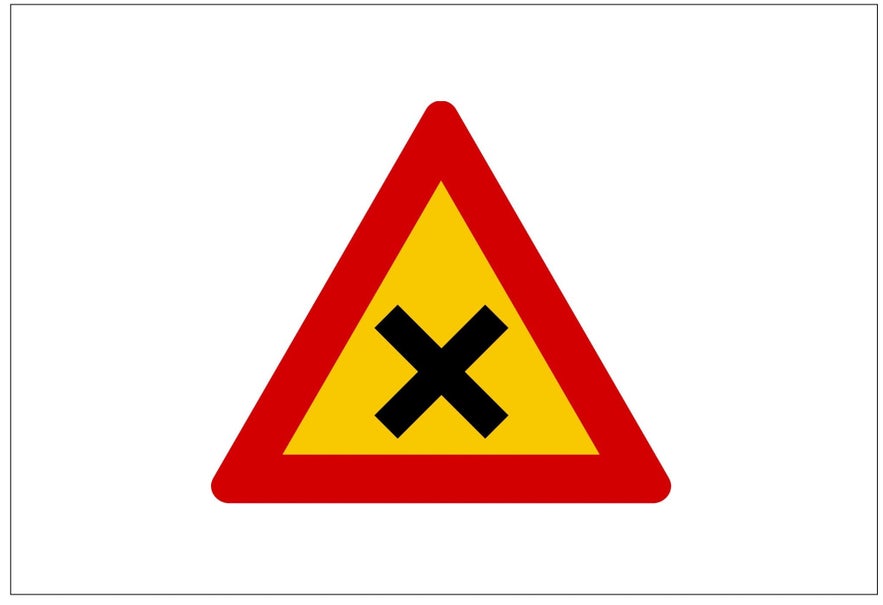
These signs are easily visible on the roadside, often near intersections and crossroads, and sometimes on bridges. Prohibitory signs are usually circular, with red borders, yellow backgrounds, and black text.
Speed Limit Signs
Speed limit signs are a must-read when driving in Iceland, as they help manage road safety. These signs feature a black number indicating the maximum speed allowed in kilometers per hour (kph).
Prohibited Entry Signs
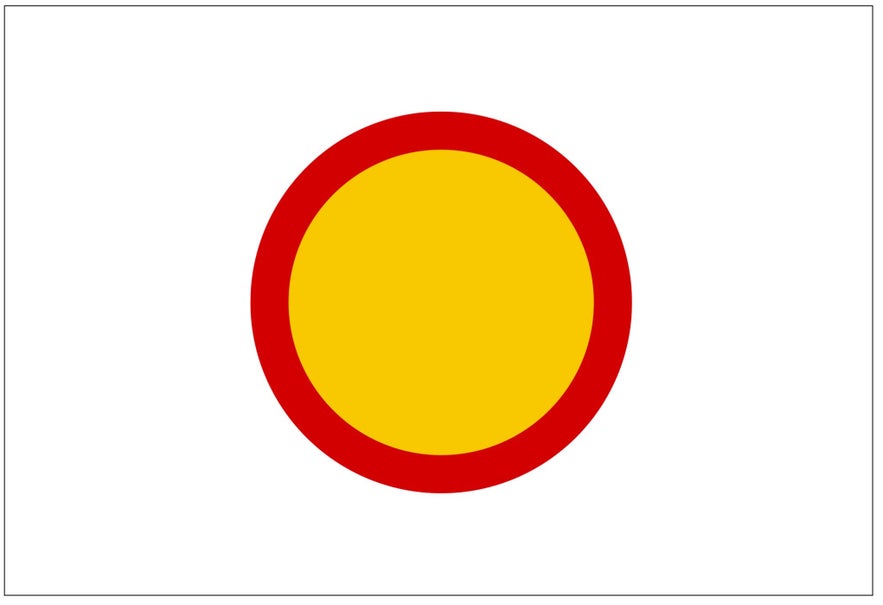
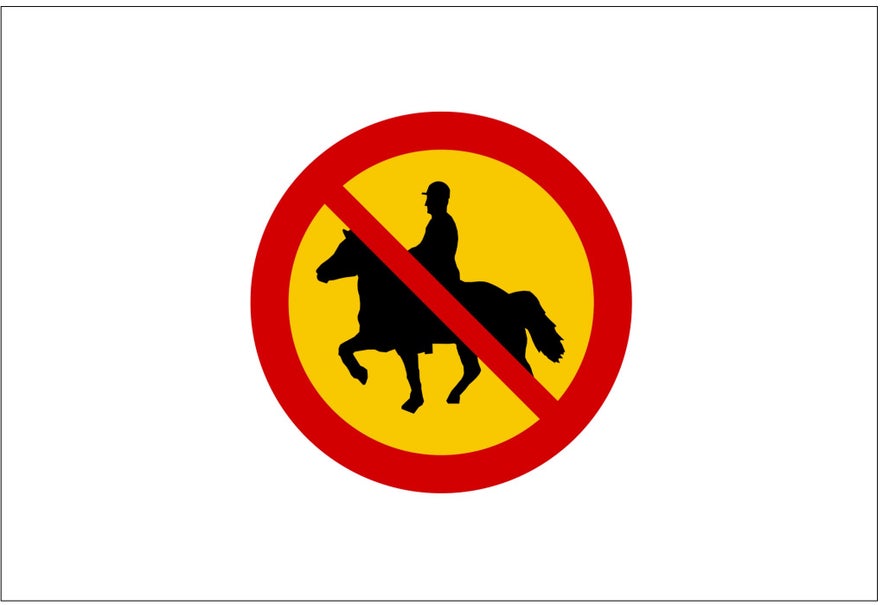
Prohibited Stopping or Parking
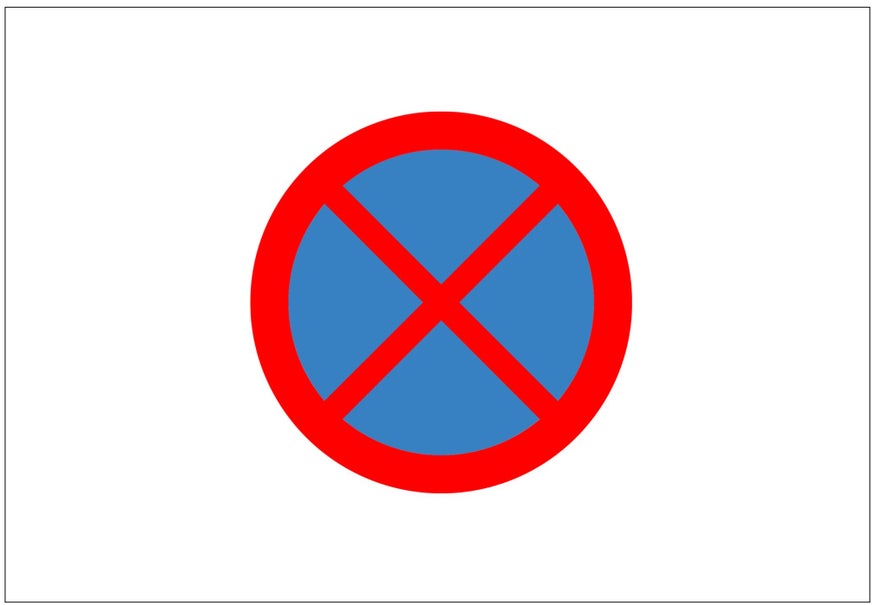
End of Zone Signs
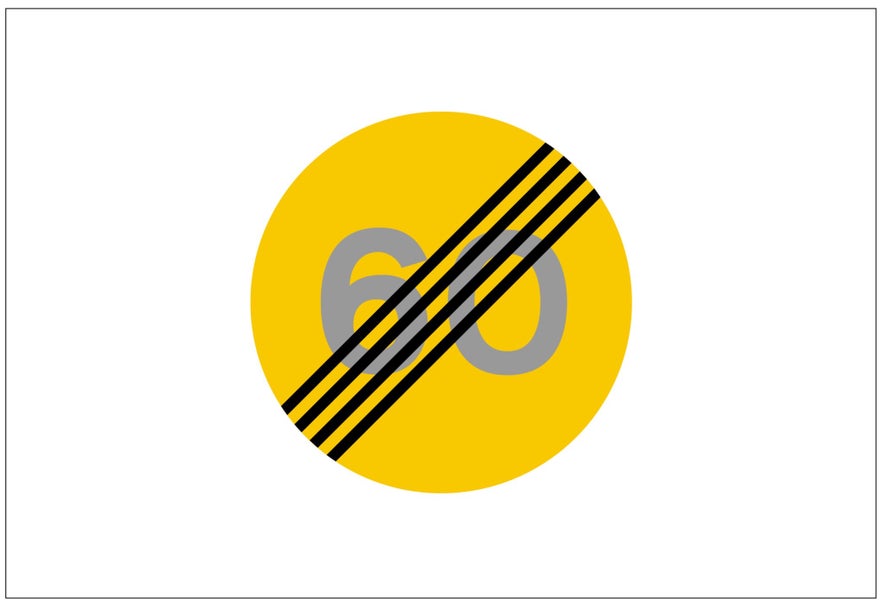
Stop Signs
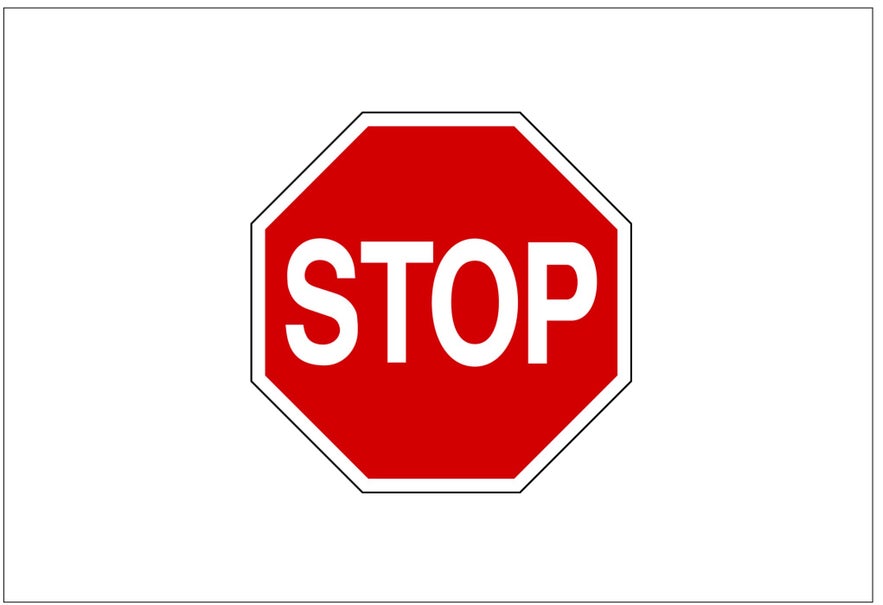
Other Examples of Prohibitory Signs

Warning Road Signs
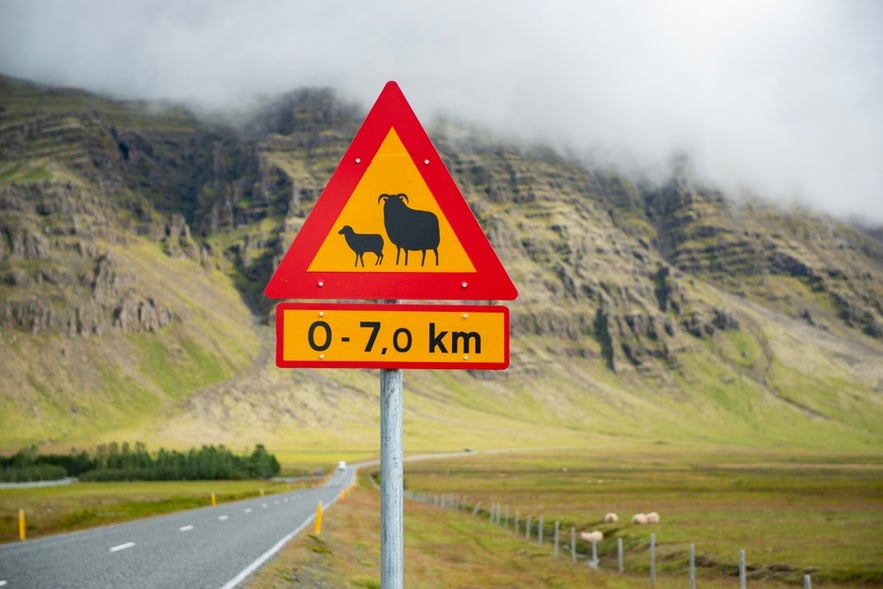 Icelandic road signs come in different colors to warn drivers about potential hazards along the way. These include signs indicating road curves, priority signs, dangerous road surfaces, and reminders to watch for pedestrians or animals in the area.
Icelandic road signs come in different colors to warn drivers about potential hazards along the way. These include signs indicating road curves, priority signs, dangerous road surfaces, and reminders to watch for pedestrians or animals in the area.
Warning signs are triangular signs with red borders, yellow backgrounds, and black text.
Signs Indicating Changes to the Road's Direction
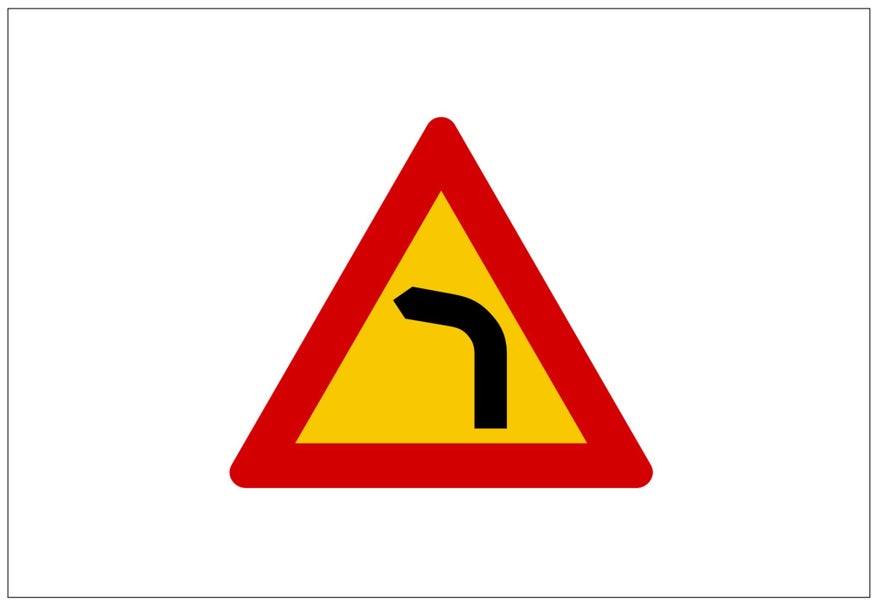
Give Way Sign

Junction Signs
These indicate an upcoming junction or crossroad. You'll be able to see from the symbol in the middle which side the intersection is on and what angle the road is coming from. You’ll encounter these signs especially near towns, airports, and major tourist attractions.
Warning Signs With Animals or People
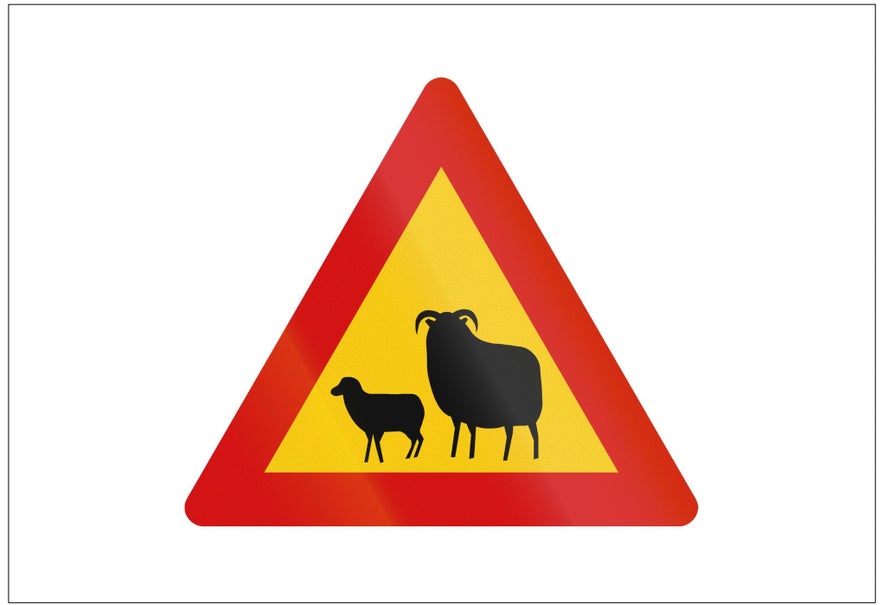
Road Conditions
Some signs warn of dangerous road conditions ahead. A snowflake icon indicates icy conditions, while other signs alert drivers to slippery roads or hazardous verges. These signs are most common in Iceland in winter, especially on remote roads and mountain paths.
Other Warning Signs

Mandatory Road Signs
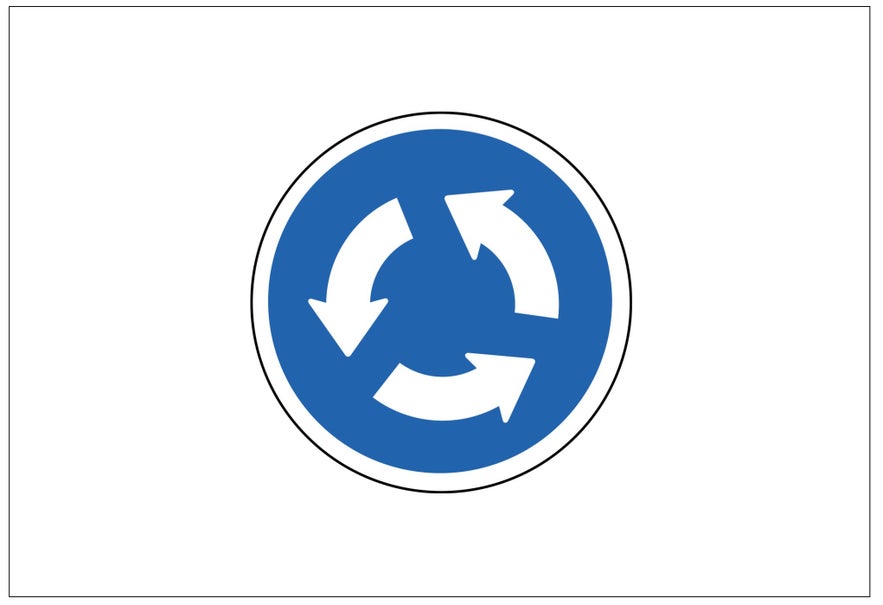
Failure to comply with mandatory road signs in Iceland can result in fines or other penalties, making it crucial for drivers to understand and obey them.
Mandatory road signs are circular with a white border, blue background, and white text.
Some symbols and pictures are the same as on the warning signs. For example, the roundabout sign has three arrows in a circle, showing the direction of traffic flow. You might see this on a mandatory sign (the blue circle signs) or a warning sign.
Direction Signs
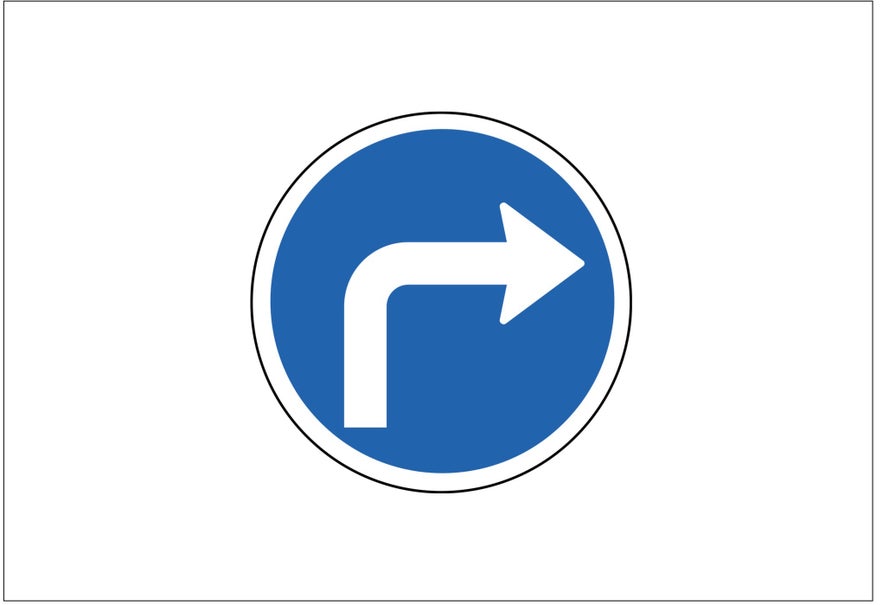
A downward diagonal arrow tells you to keep to that side. Two small downward diagonal arrows show that you can pass on either side.
Paths for Specific Traffic Types
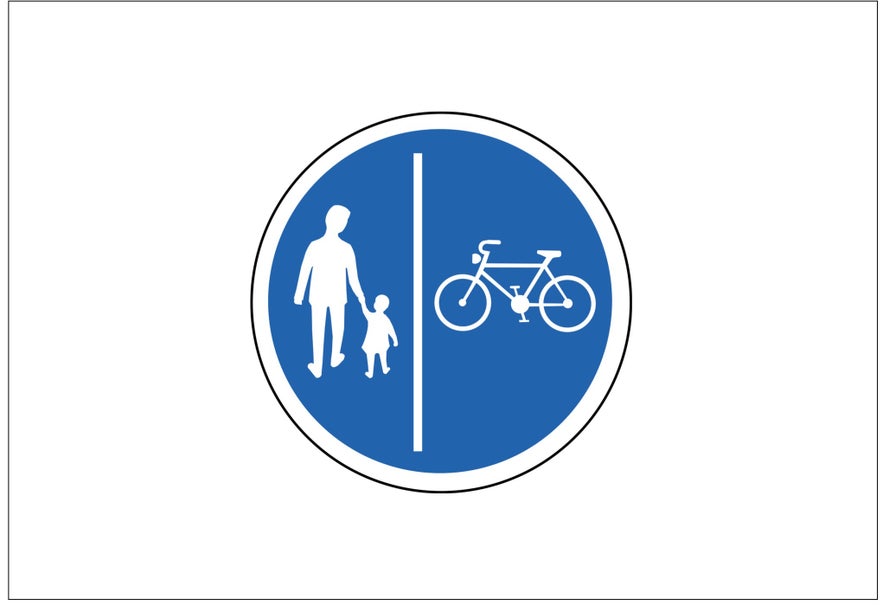
Parking Signs
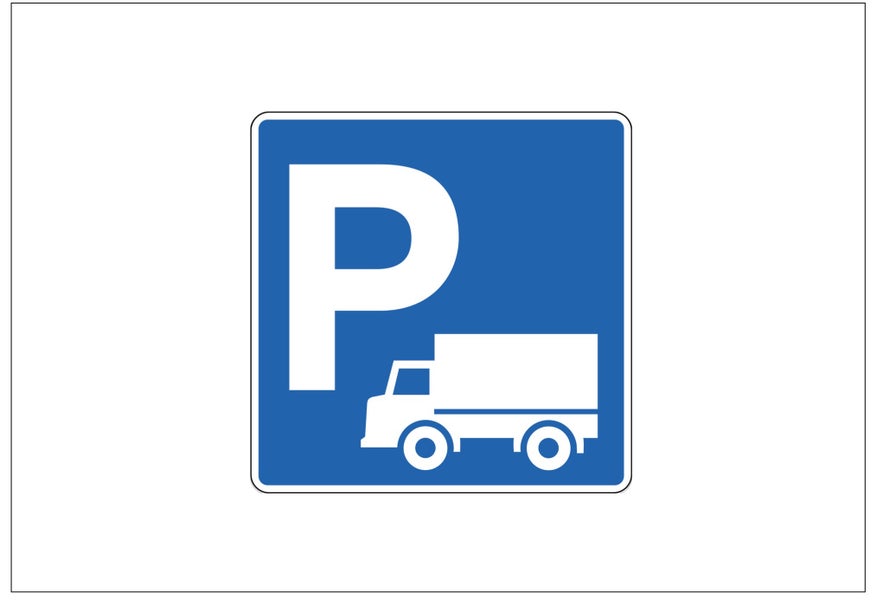
Common Traffic Signs
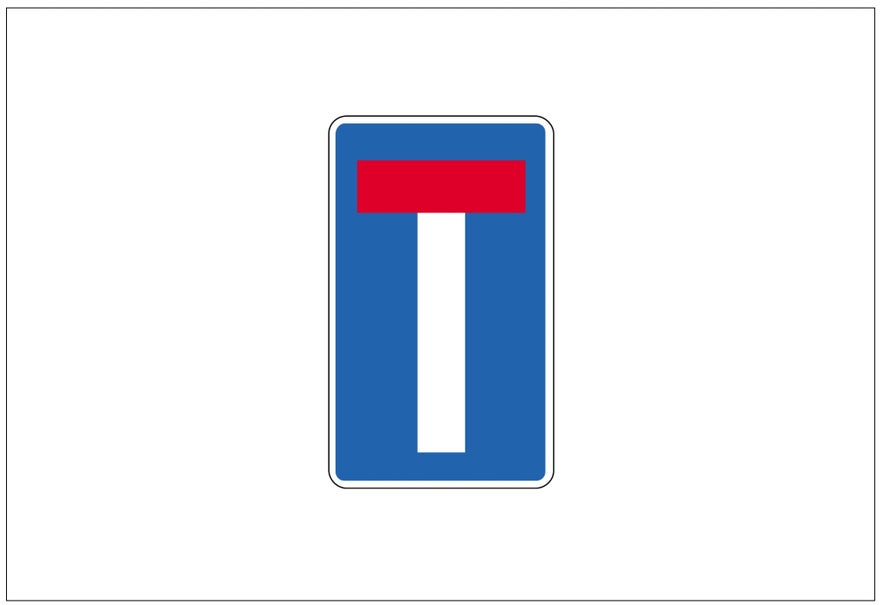
If you see a sign with a white symbol that looks like a large letter "M," it tells drivers there is a place for allowing oncoming traffic to pass.
A blue sign with a red and white symbol similar to a capital "T" means there is a dead end ahead.
Signs in Icelandic
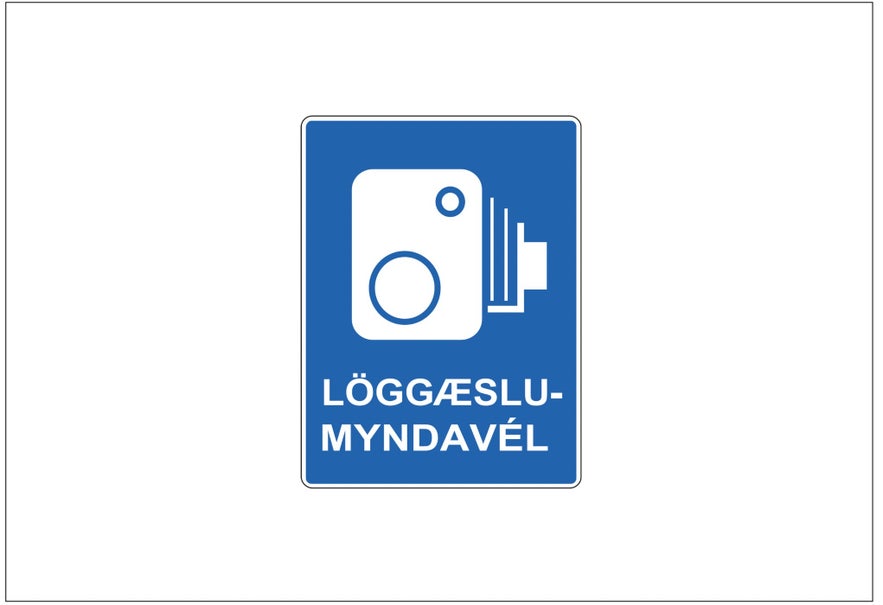
A blue sign with an image of a camera may have the word "Löggæslumyndavél" underneath, which means "traffic enforcement camera" in English.
The word "stans" means stop in Icelandic, and you may see signs with this word at places like toll booths or busy junctions.
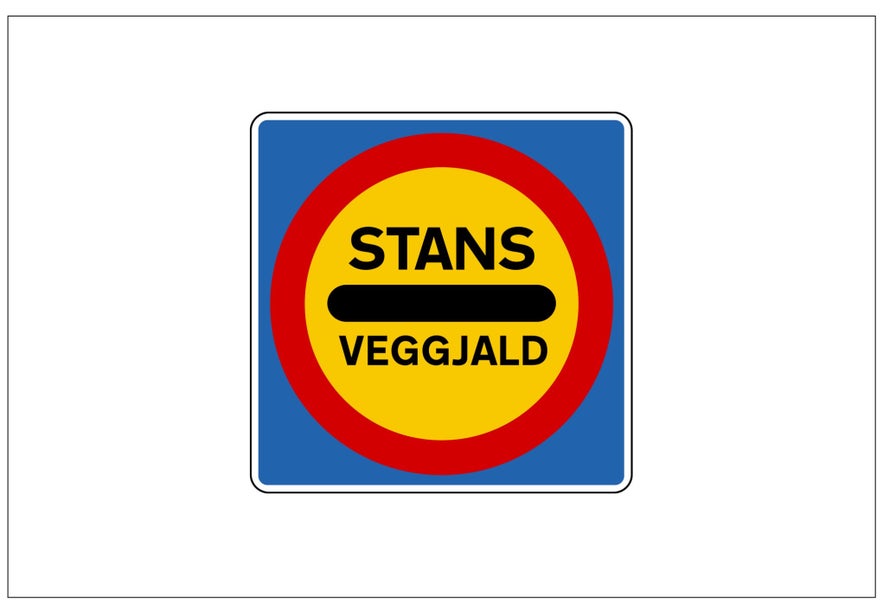

Service Signs
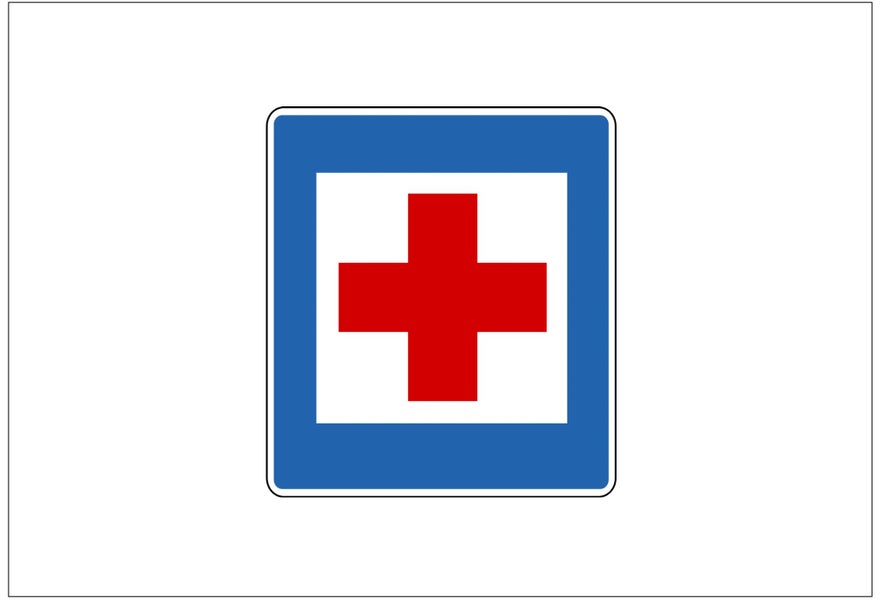
Emergency services, such as a first-aid station, emergency phone, shelter, pharmacy, or fire extinguisher, have a red symbol rather than a black one.
The police office sign has a yellow and black badge in the middle, making it easy to distinguish.
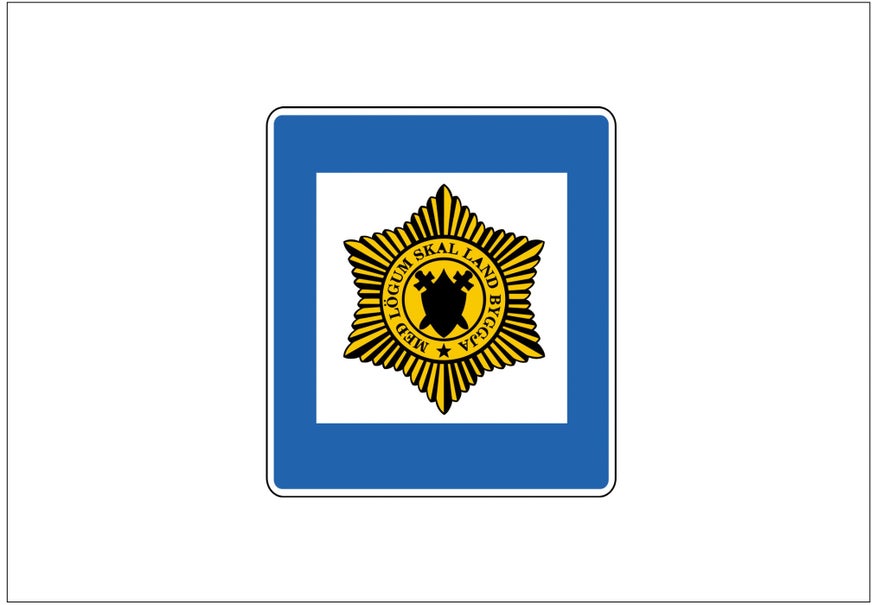
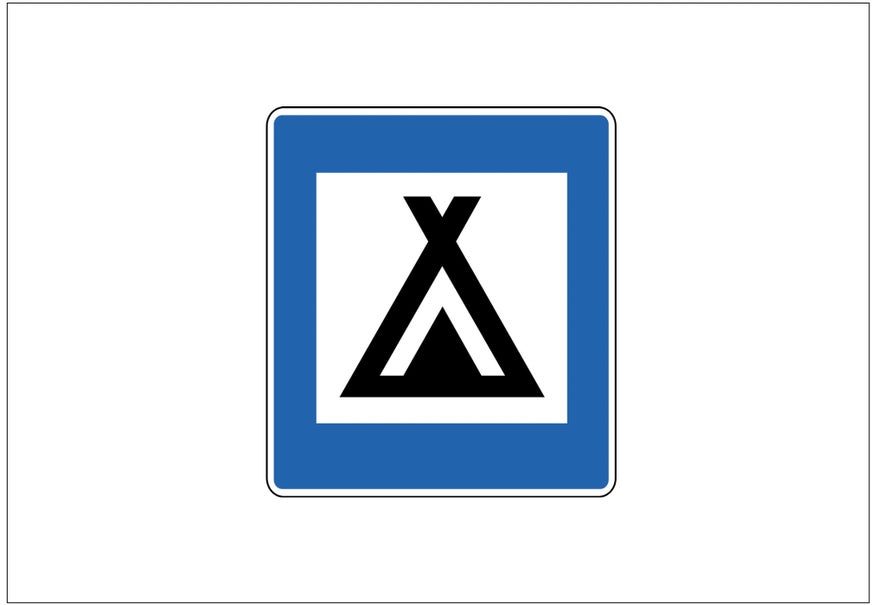
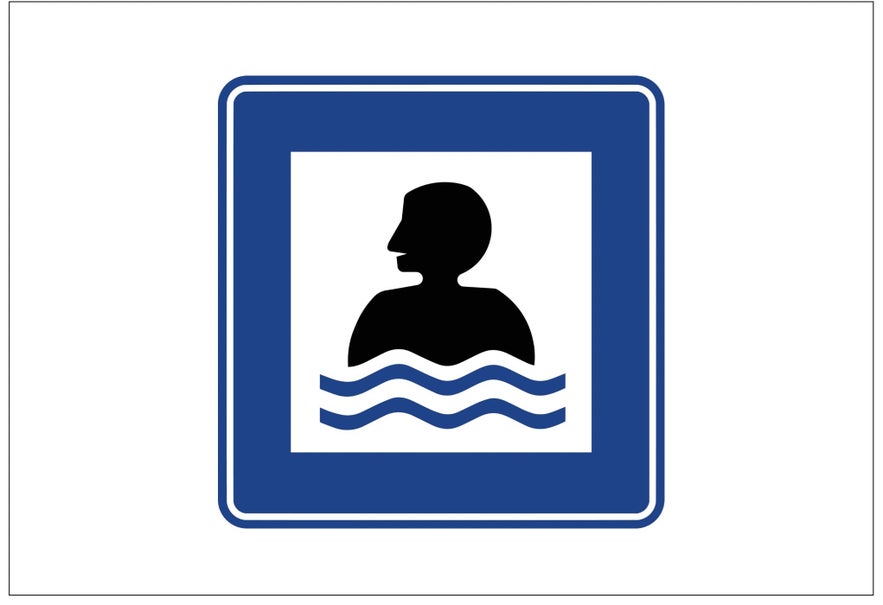
Traffic Lights in Iceland
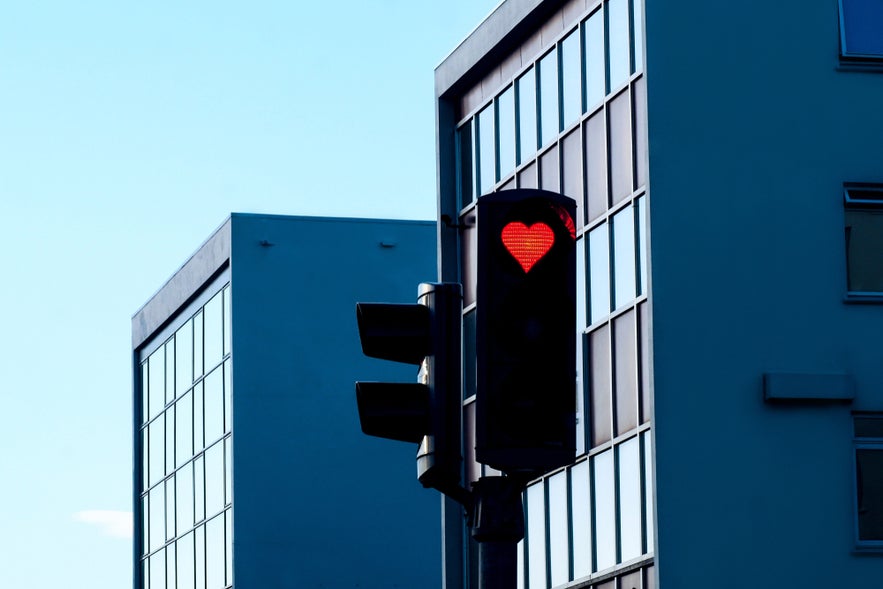 Traffic lights in Iceland are similar to those in other countries, and drivers should be familiar with the general color meanings:
Traffic lights in Iceland are similar to those in other countries, and drivers should be familiar with the general color meanings:
-
Red: Stop
-
Green: Go
-
Amber (Yellow): This indicates that the light is about to turn red, so you should slow to a stop if you can do so safely.
Additionally, here are a few things to keep in mind:
-
Flashing yellow light: This light is a signal to take caution. Drivers should slow down and be aware of the road conditions ahead.
-
Flashing green light: You might encounter a flashing green light, particularly at pedestrian crossings. This means the light is about to turn red, so be prepared to stop.
In urban areas like Reykjavik, you will also find pedestrian traffic lights with a green walking person symbol for when it’s safe to cross and a red hand symbol for when it’s not. Be sure to obey these signals to ensure safety.
In Iceland, turning right on red is not allowed unless there is a specific sign indicating otherwise. Always wait for the green light before turning.
If you encounter a malfunctioning traffic light, there may be a priority sign or police officers directing traffic, especially at busy intersections. While traffic lights are common in cities like Akureyri, rural areas often use roundabouts or priority signs instead.
Other Iceland Road Signs
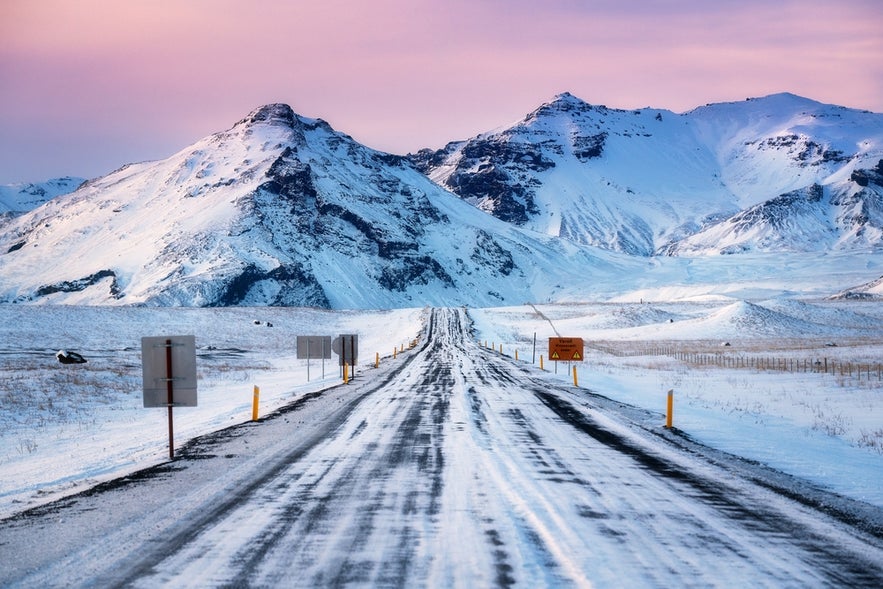 Here are some more fun and interesting signs from Iceland. Some were a long-time standard, but others are still around, and you may even spot them during your road trip!
Here are some more fun and interesting signs from Iceland. Some were a long-time standard, but others are still around, and you may even spot them during your road trip!
Outdated Road Signs in Iceland
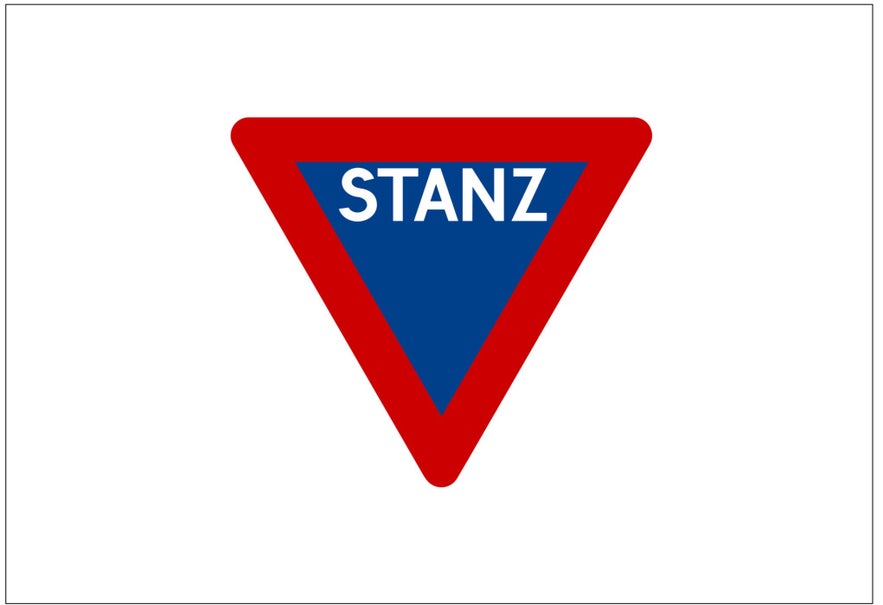
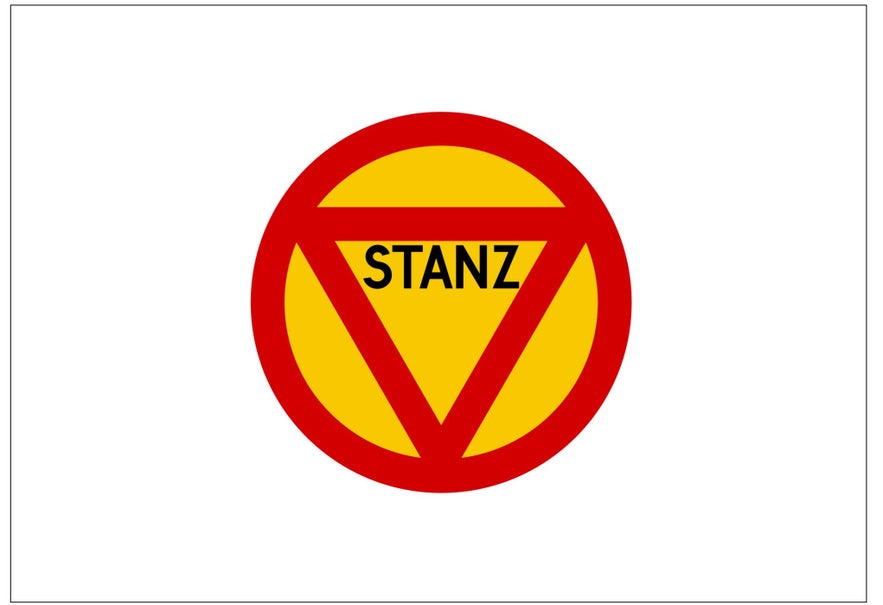
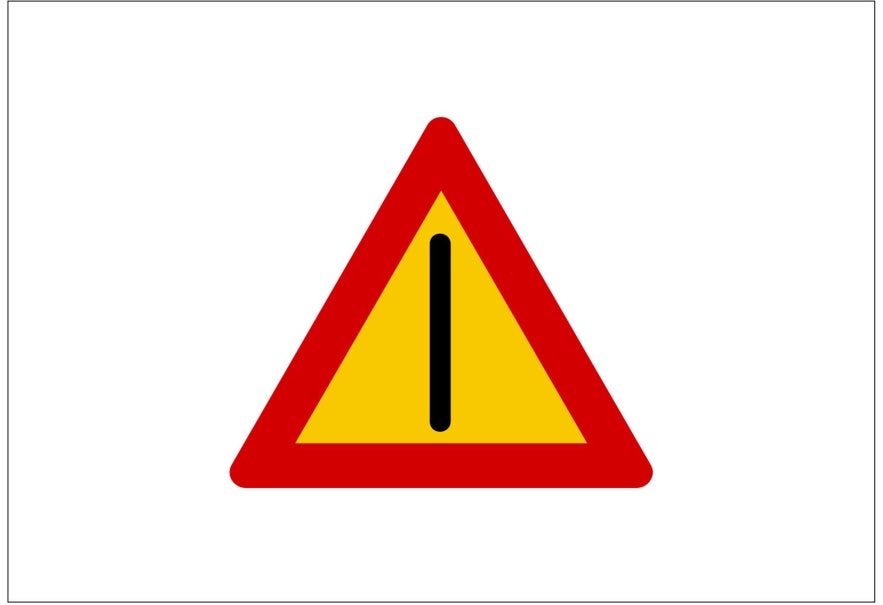
Quirky Road Signs in Iceland

Iceland is well known for its folklore, including legends of trolls, elves, and sea monsters. Keep your eyes open for unofficial warning signs of creatures lurking in the midst!
Icelanders take personal and environmental cleanliness very seriously. One thing they can't stand is finding evidence of human waste tainting the pristine landscapes. Iceland's countryside lacks toilet facilities in some places, and as a result, some people have made inappropriate toileting choices.
An unofficial sign began popping up around the country to curb this problem. It certainly looks official with its yellow background, red border, and black image of a person squatting with a poo on the ground. Of course, a red diagonal line through the middle indicates this is not okay.
Finally, keep an eye out for cute signs like the duck signs you'll see around Tjornin Lake in Reykjavik. They can make for some really charming photo opportunities!
FAQs About Driving and Road Signs in Iceland
Here are the most frequently asked questions about road signs in Iceland, helping you prepare for your trip.
What should I do if I encounter an unfamiliar road sign while driving?
If you come across a sign you don't recognize, it's best to proceed with caution. Pull over safely and consult a road sign guide or GPS device for clarification. When in doubt, prioritize safety and err on the side of caution.
Do I need to understand Icelandic to interpret road signs?
No. Most Icelandic road signs use internationally recognized symbols, making them understandable regardless of language proficiency. While some signs include Icelandic text, the accompanying symbols typically convey the necessary information.
Are there unique road signs specific to Iceland?
Yes, there are a few unique or rare road signs in Iceland, predominantly due to its terrain and wildlife. For instance, signs warning of sheep crossings are common, reflecting the free-roaming livestock. Additionally, signs indicating unbridged river crossings or one-lane bridges are prevalent in rural areas.
What happens if I get a parking ticket in Iceland?
Parking fines can generally be paid online. For example, for a parking ticket in Reykjavik, you pay on the Reykjavik City website. Unpaid tickets from rental cars are typically forwarded to the rental company, which may add administrative fees.
Can I use a GPS or phone navigation app to find my way in Iceland?
Yes. GPS devices and navigation apps like Google Maps work well in most parts of Iceland. However, in remote areas (especially the Highlands), signal may be unreliable — downloading offline maps is recommended.
Do I need an international driver’s license to drive in Iceland?
If your license is written in Roman letters (e.g., English, Spanish, French, etc.), you do not need an international driving permit. Otherwise, an official translation or international license is required.
What is the rule for yielding at roundabouts in Iceland?
In multi-lane roundabouts, the inner lane has the right of way, which is the opposite of what many drivers are used to. Be cautious and yield to traffic already in the roundabout.
Mastering Iceland’s Road Signs for Safe Travels
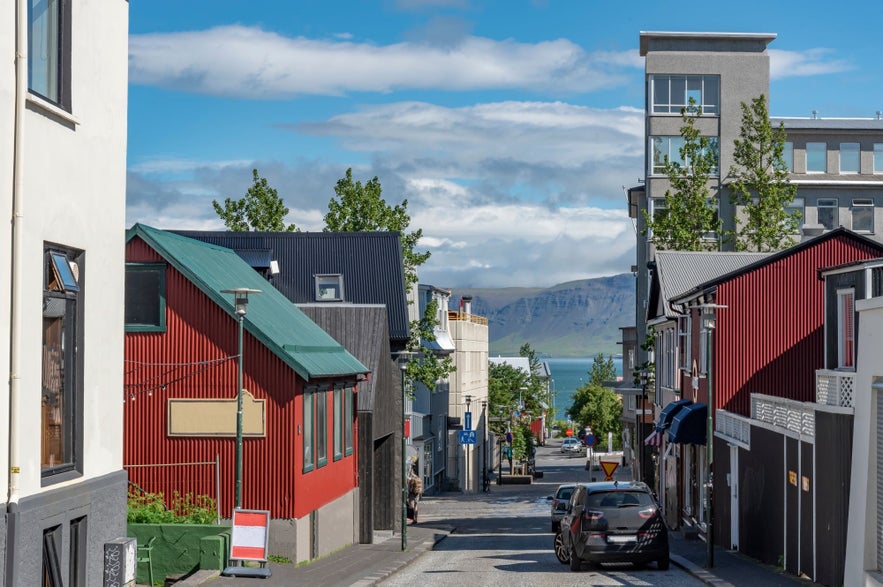 Road signs are essential for navigating Iceland’s roads safely. They keep drivers safe and highlight important locations, services, and amenities along the way. Understanding these signs is a crucial part of preparing for any driving adventure in Iceland.
Road signs are essential for navigating Iceland’s roads safely. They keep drivers safe and highlight important locations, services, and amenities along the way. Understanding these signs is a crucial part of preparing for any driving adventure in Iceland.
Whether you're planning Reykjavik tours to explore specific attractions or embarking on a 5-day self-drive tour of South Iceland, knowing Icelandic road signs will allow you to drive with confidence. This way, you can focus on what truly matters—enjoying your Icelandic adventure!
Want to share your own Iceland driving tips? Have more questions about Icelandic road signs and what they mean? Drop a comment below to share or get answers.



